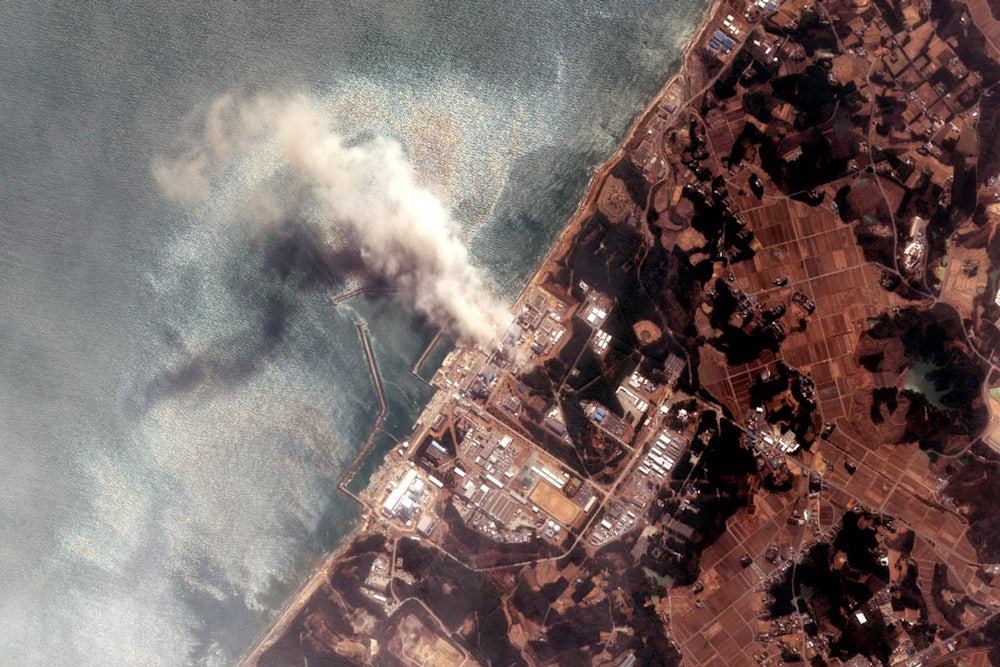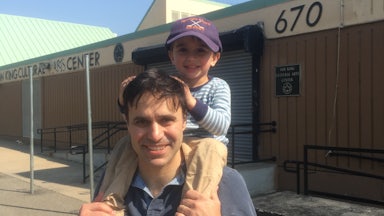On February 24, 2022, Russian troops began occupying Ukrainian territory in the Chernobyl exclusion zone. The meltdown at the Chernobyl nuclear plant 26 years earlier remains the worst nuclear disaster the world has yet experienced. In the days following the original accident, the winds blew northwest, showering significant levels of radiation over what were then the Soviet republics of Ukraine, Belarus, Lithuania, and Latvia, as well as Finland, Sweden, Norway, Poland, Austria, and the two Germanys. This meteorological history raised a terrifying possibility: Did Russia plan to weaponize Chernobyl as retaliation for Western sanctions?
Soon enough it became clear that Russian forces were not actively targeting Chernobyl’s facilities, including the sarcophagus that protects the damaged reactor core. Rather, they had chosen the sparsely populated area as the fastest route from Belarus to Kyiv. But the Russians’ continued presence raised other concerns. On March 9, the plant lost power. Ukraine’s Defense Intelligence Agency accused Russia of cutting the power in preparation for a terrorist operation—a man-made disaster—that the Russians would then attempt to blame on Ukraine. Russia denied these charges and claimed to have repaired the supply the next day.

The International Atomic Energy Agency, the United Nation’s nuclear watchdog, issued assurances that there was no cause for alarm. But nuclear watchers could be forgiven for their panic. The spotty news emerging from Chernobyl this spring uneasily echoed the trajectory of several of the world’s major nuclear disasters, including Japan’s Fukushima and Three Mile Island in the United States. The remains of the facilities at Chernobyl, like those at Fukushima and Three Mile Island, rely on circulating water to lower the temperature of radioactive waste. In theory, every nuclear facility that relies on a water system to cool either the reactor or the fuel rods has backups to ensure that water continues to circulate in the event of a power outage or a catastrophic leak. In practice, every major nuclear disaster involving a modern reactor has been caused by the failure of those systems to engage. The original Chernobyl disaster was, in fact, triggered by an attempt to test those backup systems. Thankfully, in 2022 the backup generators switched on.
None of this had yet transpired when Serhii Plokhy, a professor of history and director of the Ukrainian Institute at Harvard, began writing Atoms and Ashes: A Global History of Nuclear Disasters. Nuclear power has, in fact, been gaining popular support, despite its dangers. In recent years, some climate activists have aligned with the nuclear power industry to argue that nuclear power offers the only off-ramp from the urgent and existential threat of climate change. The World Nuclear Association, an industry lobbying group, wants to raise the share of electrical energy produced by nuclear plants from 10 to 25 percent by 2050.
While Plokhy acknowledges the threat of climate change, his study of the history of nuclear accidents has convinced him that the risks are simply too high. His account, which draws on contemporary reports of six radiological disasters as well as government investigations conducted after the fact, argues persuasively that nuclear reactors remain inherently unsafe. Nuclear engineers add new safety features after each disaster, only to be astonished by the devilish and statistically unlikely path of the next one. Citing research based on acknowledged nuclear incidents that predicts “one core meltdown accident every 37,000 reactor years,” Plohky forecasts that we will likely see another large-scale accident before 2036. We may be lucky to make it that long.
America’s first hydrogen bomb test did not go according to plan. In the waning days of February 1954, the U.S. Navy began to prepare for the test series, dubbed Operation Castle. To do so, it cleared the waters within 25 miles of ground zero at Bikini Atoll in the Marshall Islands. The firing party, led by Dr. John Clark, hunkered down in a reinforced concrete bunker 20 miles away on the island of Enyu. The test supervisor, Dr. Alvin Graves, planned to observe from the deck of the USS Estes a few miles further away. Clark, Graves, and their crews anticipated a 6 megaton blast with northerly winds. They expected that the size of the blast would push most of the radioactive fallout into the stratosphere, as had been the case when they detonated Ivy Mike—a precursor thermonuclear device tested 18 months earlier. Instead, they got a 15 megaton blast, easterly winds, and a waterspout that rained radioactive fallout over several inhabited islands, a U.S. weather station, multiple navy vessels and their crews, and the extraordinarily unlucky occupants of a Japanese fishing boat, the Daigo Fukuryu Maru.
Clark and his men had no protective clothing, so they wrapped themselves in bedsheets before driving to meet the helicopter that eventually came to rescue them. They provided the first reports of unexpectedly high levels of radiation, having stepped outside their shelter immediately after the blast to celebrate their handiwork. It took U.S. authorities more than 48 hours to evacuate the 236 Marshallese residents of Rongelap and Utirik Atolls. Based on the symptoms of radiation sickness that they exhibited over the next month, the residents of Rongelap are estimated to have received roughly the same amount of radiation as a person located about 1.5 miles from ground zero at either Hiroshima or Nagasaki. The Marshallese were later returned to their islands, where they continued to eat irradiated food. Almost every child under the age of 10 who was exposed to the fallout eventually developed thyroid problems; more than three-quarters of them had thyroid tumors. The navy’s patrol planes failed to notice the Daigo Fukuryu Maru in the waters north of Rongelap, so no one warned its crew about the unusual danger posed by the white ash that soon covered its deck. All 23 crew members experienced radiation sickness; the radio operator, Aikichi Kuboyama, died in September.
Castle Bravo involved the detonation of a thermonuclear weapon rather than the meltdown of a nuclear power reactor, but it was nevertheless a prototypical nuclear accident. Most of the technical professionals involved, including Clark and Graves, failed to plan for worst-case scenarios because they considered them so unlikely. Indeed, they failed to protect themselves, having convinced themselves that they had achieved control over the fickle atom. When it began to dawn on them that they might have a problem, they prioritized the schedule over safety. Technicians and supervisors alike initially assumed that off-the-scale radiation readings indicated a problem with the instrumentation, not the presence of extraordinary levels of radiation. Other detectors failed to register any radiation at all. Once they became aware of the problem, officials wasted precious time before evacuating those at risk and later spent decades denying survivors’ claims of harm. Meanwhile senior government authorities—in this case, the Atomic Energy Commission—issued bland assurances that the test was “routine” with “no harmful effects.”
Similar scenarios unfolded in each of the cases Plokhy discusses in the book. When Yefim Slavsky, the head of the Soviet nuclear effort, first heard reports that a storage tank for radioactive waste at the Maiak plutonium production facility had exploded, in September 1957, he assumed the message had been garbled. Storage tanks don’t explode. The problem must have been with the reactor. In the critical hours leading up to a reactor fire at the U.K.’s Windscale facility, one month later, operators struggled to understand the pile’s strange behavior during a maintenance operation that had been postponed several months in the name of plutonium production. Among other problems, the sensors that should have helped them pinpoint the source of excess heat didn’t work at extremely high temperatures. At Three Mile Island, the control panels lacked an indicator for what turned out to be a critical water valve. Operators’ desperate attempts to solve what turned out to be the wrong problem directly created the conditions that led to the partial meltdown of reactor number two in March 1979. Plant managers at Chernobyl made the disastrous decision to press pause halfway through a test of the backup generators to satisfy demands made by the regional administrator of the electrical grid. At Fukushima, plant designers located the backup generators below sea level for a facility nestled against the sea in a country vulnerable to earthquakes and tsunamis like the one that inundated the plant in March 2011. Some version of the phrase, “No one believed that something like that could happen,” appears in every chapter.
The technical details in these stories matter immensely, and Plokhy excels at breaking them down. A reactor cooled by water behaves differently from one cooled by pressurized gas; a graphite reactor with vertical fuel rods presents different hazards from one with horizontal ones. The good news—such as it is—is that each new generation of reactors has incorporated the lessons of prior accidents into its designs. The consequences of Three Mile Island, for instance, would have been incalculably worse had the facility not included a containment structure. The worst of Windscale’s radiation was similarly trapped in a series of filters installed at the last minute to mitigate weaknesses in the reactor design. The bad news is that the authorities in charge of building nuclear power plants do not always incorporate these safety features into their designs. At Chernobyl, nuclear experts were well aware of the shortcomings of their chosen reactor design, which lacked both an emergency cooling system and an accident localization system. As Plokhy writes, the system was “outdated in its basic design and dangerous in operation.” Chernobyl, in other words, was a disaster waiting to happen.
Complex systems are inherently fragile. Neither the human brain nor technical systems can adequately process the quantity of essential signals generated by a meltdown in a nuclear reactor. The operators at Three Mile Island, for instance, encountered a control panel that was issuing more than 100 alarms simultaneously, many of which were off the scale. Nor could the unit’s computer keep up. As one of the operators later recalled, “The computer, the IBM typewriter just types them one at a time. So as they were coming in rapidly, probably 10 or 15 per second, it just could not keep up.” Soon the printer was operating at a two- to three-hour delay. Eventually it jammed.
The book’s focus on discrete events—Castle Bravo, Kyshtym, Windscale, Three Mile Island, Chernobyl, and Fukushima—has a downside, in that it elides the cumulative effects of three-quarters of a century of nuclear weapons production and testing. This is not a book about the long-term damage that living and working in an atomic company town does to human bodies and their relationships with one another, as so evocatively described in Kate Brown’s 2013 book, Plutopia. Plokhy doesn’t provide an estimate of the global radiation exposure created by the orgy of nuclear tests conducted by the U.S., the Soviet Union, the U.K., and France between 1958 and 1963, when the three leading nuclear powers signed a Limited Test Ban Treaty that prohibited tests in the atmosphere, in outer space, and underwater; nor does he discuss the years that inhaling radioactive dust shaves off uranium miners’ lives. While he mentions, in passing, that no nuclear power has yet found a way to deal with its stockpiles of radioactive waste, it’s not a topic he dwells on. These, too, are nuclear disasters.
But while one can quibble with Plokhy’s definition of a nuclear disaster, the existence of these ongoing, slow-moving crises only underscores his central point: There is no safe way to harness the power of the atom. The Limited Test Ban Treaty pushed nuclear testing and the dangers of radiological disasters underground, where it remained out of sight and out of mind for most people not directly involved with the nuclear industry. Over the next 50 years, that sense of complacency has only been violated by a handful of accidents, each seemingly more unlikely than the last. But they are not unlikely; they are inevitable. Sooner or later, we must grapple with the risks.






